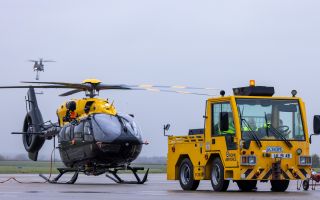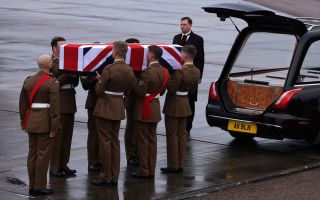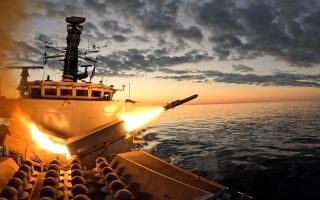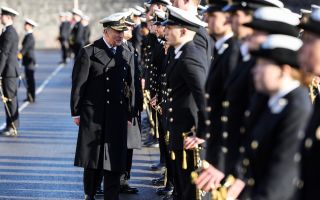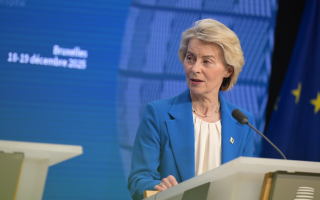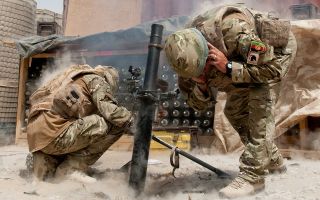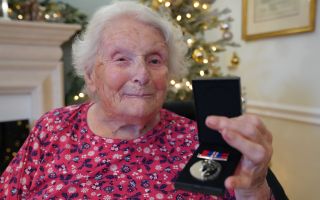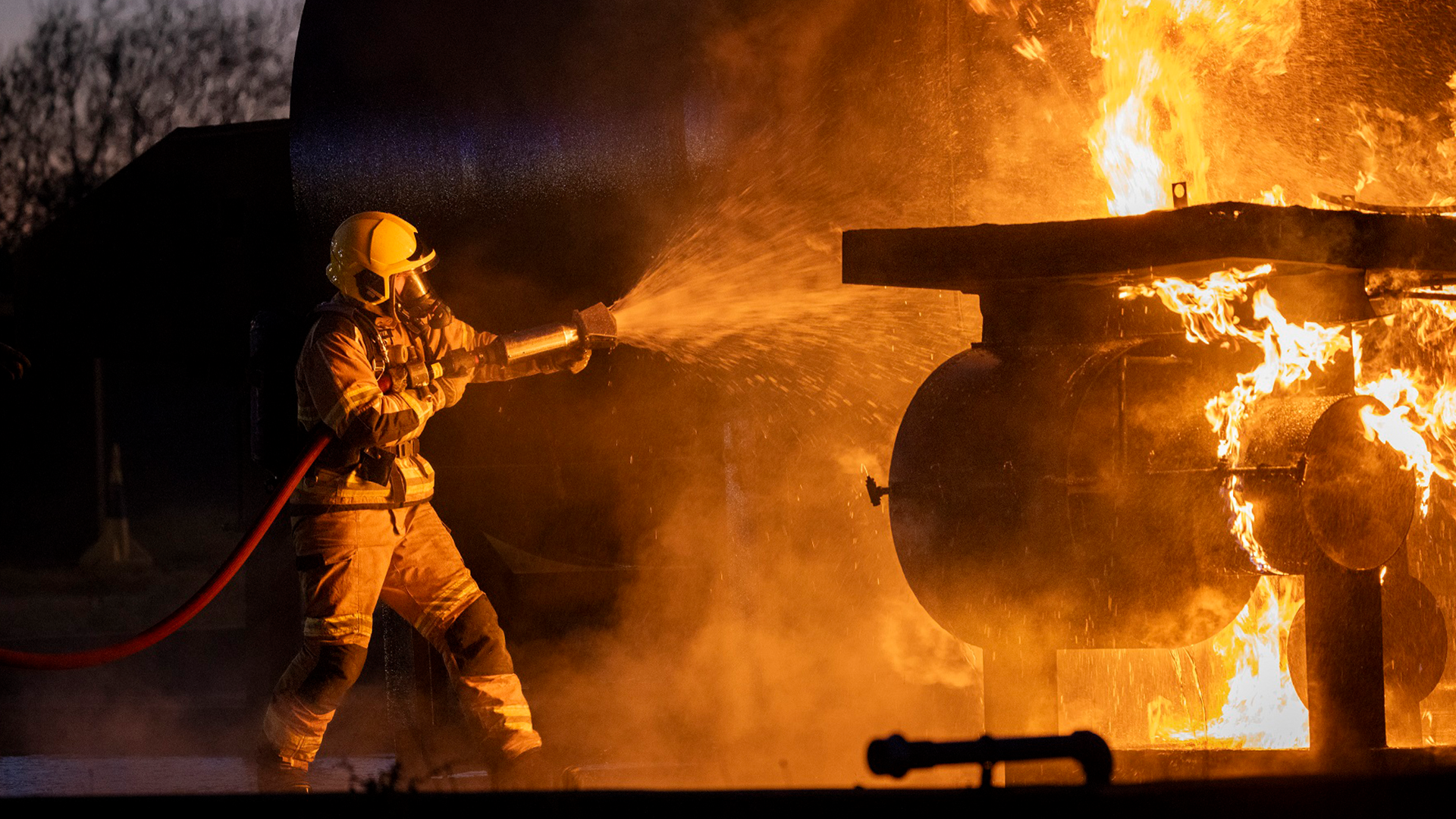
Firefighters set mock Typhoon ablaze during night-time exercise at RAF Coningsby

A wall of flames lit up the night sky at RAF Coningsby as firefighters set a full-scale mock Typhoon alight – part of a dramatic training scenario designed to sharpen their response to real-world aircraft emergencies.
The blaze, which is controlled but intense, was part of a live fire exercise to replicate the dangers of fuel fires, electrical faults and weapons malfunctions on the airfield.
Crews wearing full breathing apparatus tackled the flames using specialist equipment, racing against the clock to get the job done.
- Crowds to hear roar of Lancaster as Battle of Britain Memorial Flight begins 2025 season
- UK not sharing tech on Tempest fighter jet project, Italian defence minister claims
- F-35 Lightnings set to join HMS Prince of Wales on landmark mission to Indo-Pacific
Flight Sergeant 'Kenny' Dalgliesh, who leads the Fire Section, said: "Coningsby is a 24/7 Quick Reaction Alert station, which means that we have to be a 24/7 Fire Section.
"That's our main role, to provide round-the-clock fire cover for the airfield."
The team operates from the Lincolnshire base day and night, providing emergency cover for one of the RAF's two Quick Reaction Alert (QRA) stations – home to frontline Typhoon squadrons ready to scramble at a moment's notice.
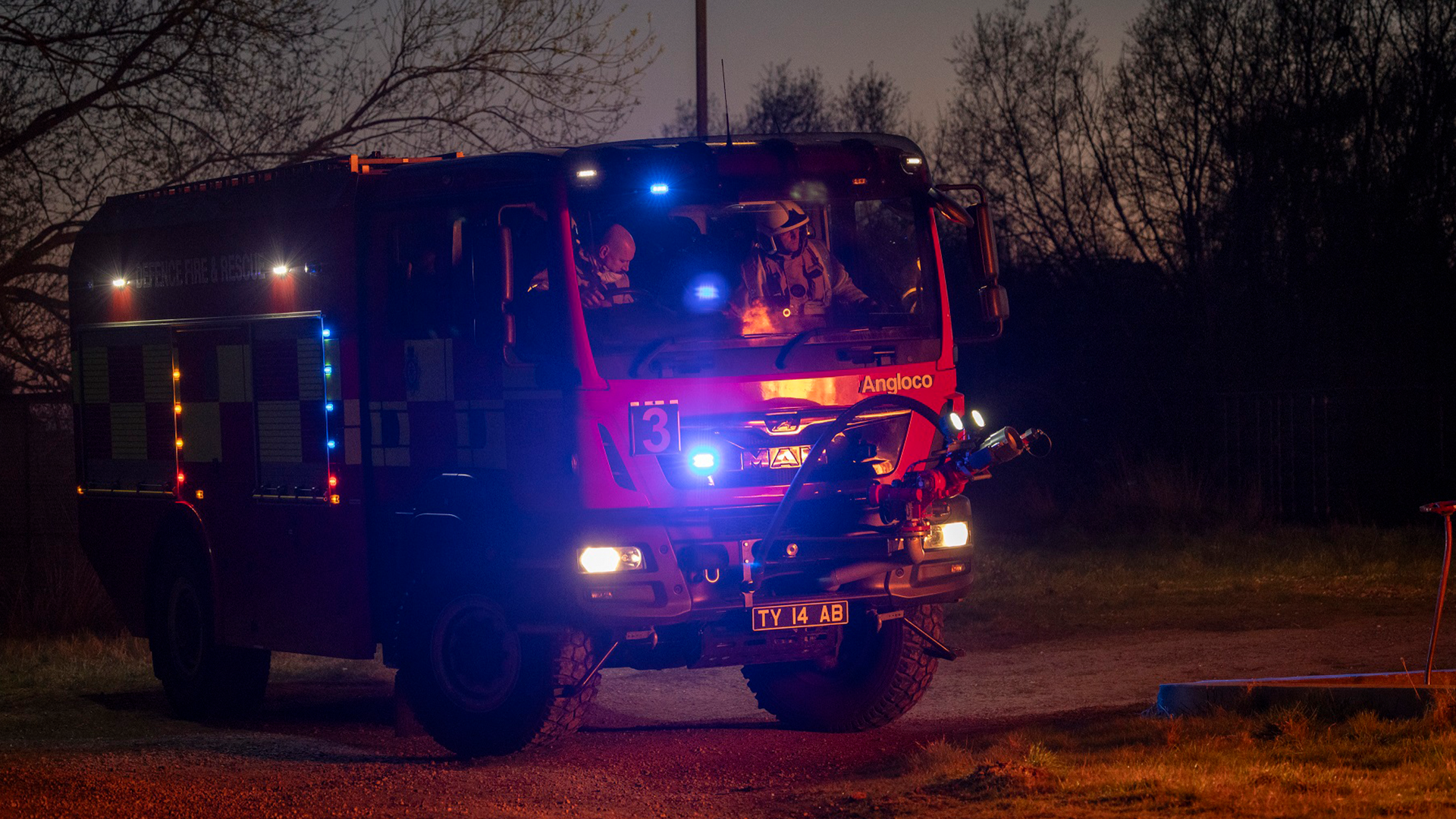
The aircraft used in the exercise isn't a real Typhoon, but a training rig built to simulate multiple aircraft types and withstand repeated fire exposure.
It gives crews a safe but realistic environment to train under pressure.
Air Specialist (Class 1) Ed Butcher, who has been in the RAF Fire and Rescue Service for four years, took part in the training.
"With any aspect of training, you've got some adrenaline going, whether you're wearing breathing apparatus or being the driver," he said.

"You're going to be pushing yourself to a high level because every minute counts.
"When you are fighting the fire and you’ve got the equipment on, you are working really hard, but the payoff is massive."
Military fire engines are built for the job. Each tender carries more than 4,500 litres of water and 650 litres of foam concentrate – nearly three times more than a civilian fire appliance – and can empty its tanks in minutes.
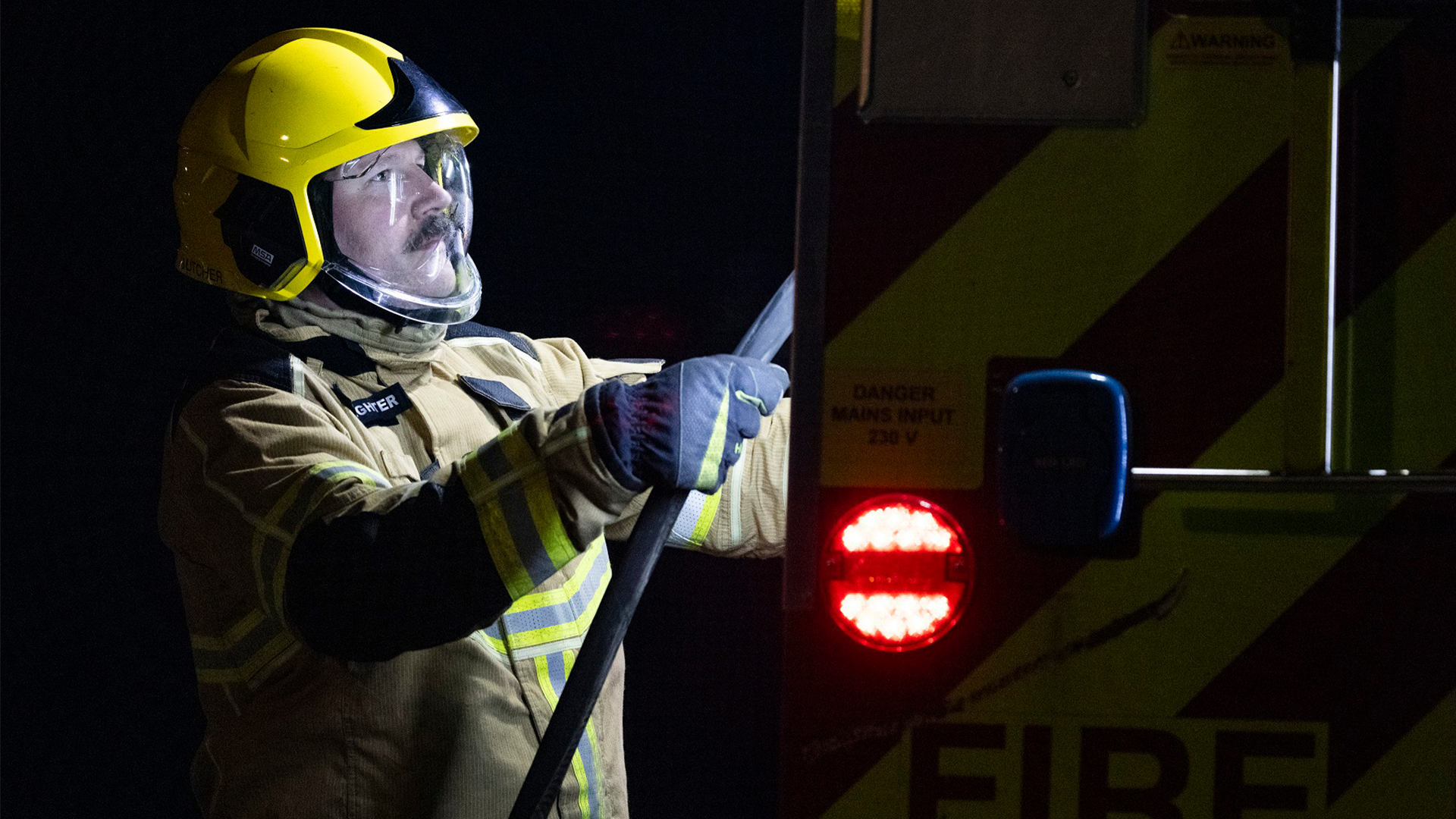
Air Specialist (Class 1) Jack Nairn, who completed training in 2023, said becoming a firefighter takes more than just muscle.
"Throughout training, I thoroughly enjoyed it, and it pushed you physically and mentally, that’s with the practical assessments and the theory test as well.
"You grow as a firefighter each week… so you're developing all the time to prepare you for arriving at a station."
All RAF firefighters complete 10 weeks of basic training, 14 weeks of specialist instruction, and four months of hands-on learning during their first tour.
But most of the job is about fire prevention.
The Coningsby team also covers technical buildings and accommodation blocks, running risk assessments, checking compliance with safety regulations, and training base personnel on what to do in the event of a fire.
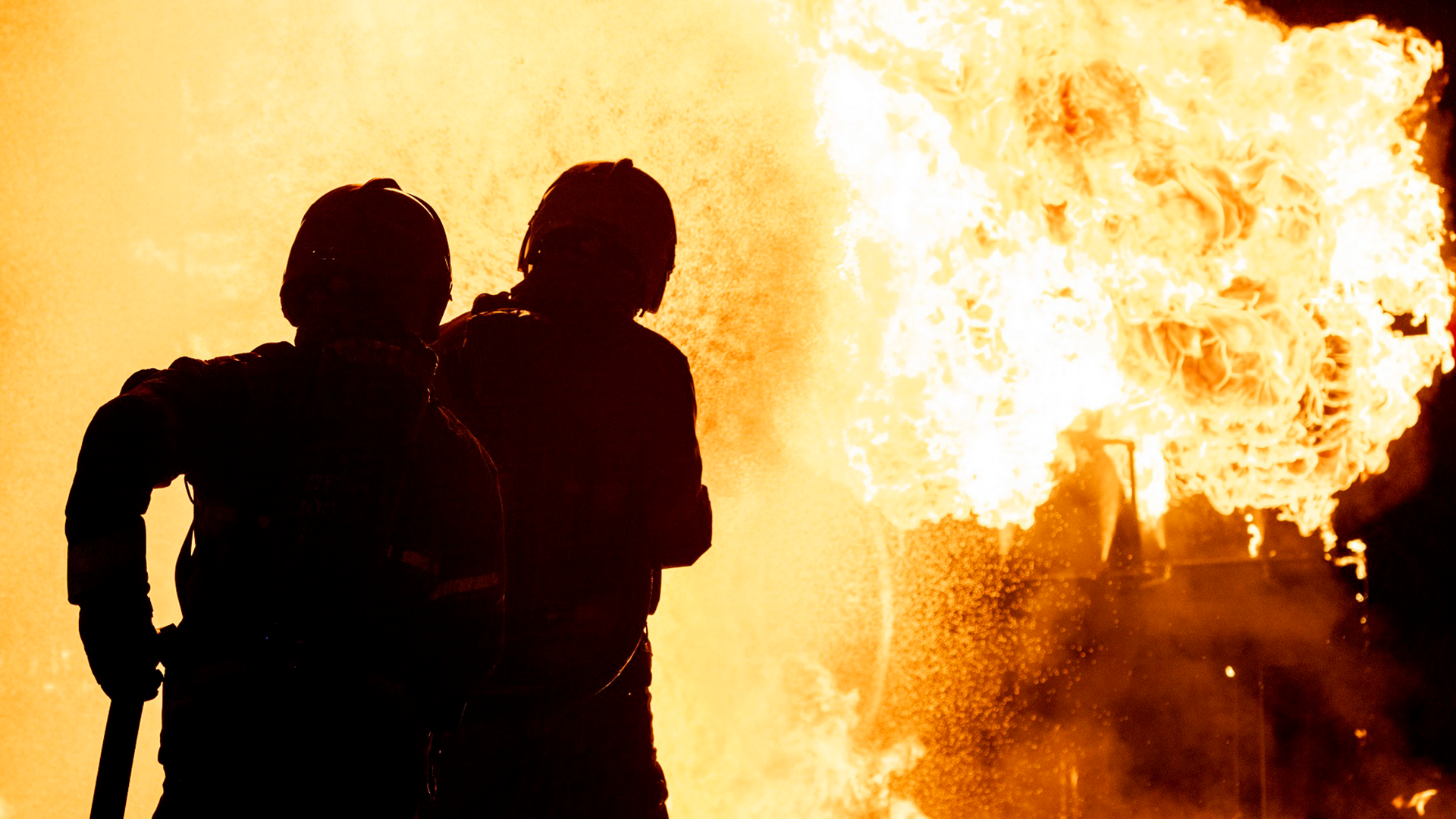
Acting Station Commander Wing Commander French said the Fire Section is "impossible to run an RAF station without."
"As a Quick Reaction Alert station, we rely on our Fire Section 24 hours a day, 365 days a year."
Crews can also deploy off-station to assist civilian authorities in nearby Coningsby or Tattershall during emergencies.
He added: "They could go from holding a training session to tackling an aircraft fire in the next minute.
"Work of this kind is dangerous, and it takes a focused mindset to achieve – and we're extremely fortunate to have a crew like this."

